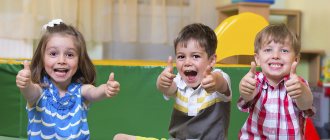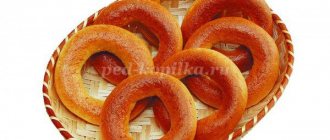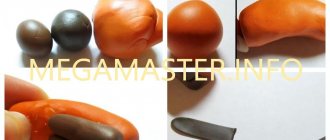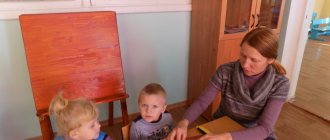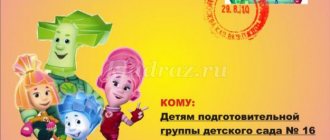Long-term planning for modeling in the second junior group
Sudakova Svetlana
Long-term planning for modeling in the second junior group
Long-term planning for modeling in the second junior group.
Month,
week Theme,
literature Software
content Materials and equipment Methods and techniques Joint activities with children Joint activities with parents
September
1 "Introduction to clay, plasticine"
Visual activities in kindergarten
T. S. Komarova p. 46
Forming the idea that plasticine is soft, you can sculpt from it, you can pinch off small lumps from a large lump. Formation of the ability to place plasticine and molded products only on the board, to work carefully. Develop a desire to sculpt.
Plasticine, boards or oilcloth (for each child)
. Conversation, explanation, demonstration. Looking at illustrations. Encourage parents to organize family visits to the museum of fine arts, exhibition halls, and workshops of artists and sculptors.
3 "Sticks"
(
"Candy"
)
Visual activities in kindergarten
T. S. Komarova p. 47
Forming the ability to pinch off lumps of plasticine and roll them between the palms with straight movements. Consolidating the ability to carefully place finished products and a board.
Develop a desire to sculpt. Small lumps of plasticine, boards. Explanation, demonstration of sculpting . “candy” in your free time
in candy wrappers. Conversation:
“Development of creative abilities in children”
October
1 "Kolobok"
Visual activities in kindergarten
T. S. Komarova p. 55 To arouse in children the desire to create images of fairy-tale characters in modeling . Strengthen the ability to sculpt round objects by rolling the clay between your palms in a circular motion. Strengthen the ability to work accurately with plasticine. Learn to draw some details (eyes, mouth)
.
Stripe - track (green, light brown or light gray)
.
Clay, boards, sticks. Explanation, demonstration of sculpting . Looking at illustrations. Reading the fairy tale "Kolobok"
Encourage parents to organize family visits to the museum of fine arts, exhibition halls, workshops of artists and sculptors
3 “Gift for your favorite puppy (kitten)
» Visual activities in kindergarten
T. S. Komarova p. 57 Form imaginative perception and imaginative ideas, develop imagination. Teach children to use previously acquired skills in modeling . Cultivate a kind attitude towards animals, a desire to do something good for them. Clay (plasticine, boards (for each child)
.
Explanation, demonstration of sculpting . Individual assistance. Reading books, talking about cats and dogs. Invite parents, together with their children, to look at book illustrations depicting puppies (kittens)
.
November
1 "Cookie"
Visual activities in kindergarten
T. S. Komarova p. 66 Strengthen children’s ability to roll out plasticine in a circular motion; flatten the ball by squeezing it with your palms. Develop a desire to sculpt. Continue to practice your mastered sculpting . Strengthen the ability to carefully work with plasticine. Develop creativity. Cookie. Plasticine, boards, sticks for drawing patterns on cookies (for each child)
.
Examine round cookies with children, clarify their shape (round, flat)
.
Demonstration of sculpting .
During games, look at flat round objects. Invite parents to look at flat round objects while walking with their children. 3 "Pretzels"
Visual activities in kindergarten
T. S. Komarova p. 61 Strengthen the techniques of rolling out plasticine with straight movements of the palms.
Teach children how to roll the resulting sausage in different ways. To develop in children the ability to examine works, highlight similarities and differences, and notice the diversity of created images. Pretzels. Plasticine, boards (for each child)
. Look at the pretzels with the children and ask how they can be made.
Demonstration of sculpting . Games in the doll corner. Invite parents to make round objects together with their children at home.
5 "Gingerbread"
Visual activities in kindergarten
T. S. Komarova p. 63 Strengthen children’s ability to sculpt balls. Learn to flatten the ball by squeezing it with your palms. To develop children's desire to do something for others. Doll, doll furniture. Plates, boards (for each child)
. Looking at a round gingerbread with children. Explanation of clarification of the form.
Demonstration of sculpting . Games in the doll corner, games with a variety of toys. Consolidating children's lessons about the shape of objects during games. Invite parents to go to a puppet theater with their children.
December
1 "Cakes, big and small"
. Visual activities in kindergarten
T. S. Komarova p. 67
Continue to teach children to pinch off large and small lumps from a large piece of plasticine; roll out lumps of plasticine in a circular motion. Strengthen the ability to flatten a ball by squeezing it with your palms. Develop creative abilities. Plasticine, boards, sticks for decorating molded cakes (for each child)
.
sculpting techniques , explanation.
Examination of illustrations; children's games in play corners. Encourage parents to organize family visits to the Museum of Fine Arts, exhibition halls, workshops of artists and sculptors 3 “Tower”
(“Pyramid of disks
(rings)
”).
Visual activities in kindergarten
T. S. Komarova p. 71 Continue teaching children to roll out lumps of plasticine between their palms in a circular motion; flatten the ball between your palms; compose an object from several parts, superimposing one on another. Strengthen the ability to sculpt accurately. A turret consisting of 4 – 5 rings of the same color. Plasticine, boards (for each child)
.
Examining a turret with children, showing sculpting . Games with turrets “Who can collect it first?”
,
“Assemble the same one
.
Exercise children in comparing objects of different sizes during games. Consultation: “Development of creative abilities in children
.
January
1 "Tangerines and Oranges"
.
Visual activities in kindergarten
T. S. Komarova p. 74 Strengthen the ability to sculpt round objects by rolling plasticine in a circular motion between the palms. Learn to sculpt objects of different sizes. Tangerines and oranges (or other round objects of different sizes)
.
Plasticine, boards (for each child)
. Looking at tangerines and oranges with children.
Explanation of clarification of the form.
Demonstration of sculpting . In everyday life, during games, enrich children’s understanding of round objects of different sizes and purposes (toys, vegetables, fruits)
. Enrich children's understanding of round objects.
3 "Little dolls are walking in a snowy meadow"
Visual activities in kindergarten
T. S. Komarova p. 78 To develop in children the ability to sculpt an object consisting of two parts: a column (fur coat)
and round in shape
(head)
; roll the clay between your palms with straight and circular movements, connect the parts of the object using the pressing technique. Develop creative abilities. Plasticine, sticks, boards (for each child, a stand for a collective composition - a small cardboard rectangle covered with cotton wool. Examine with children a doll consisting of a large column and a small ball. Explanation,
demonstration of modeling . Games with small dolls in the play corner, while walking. Encourage parents to organize family visits to the museum of fine arts, exhibition halls, and workshops of artists and sculptors.
February
1 "Sparrows and the cat"
Visual activities in kindergarten
T. S. Komarova p. 80 Continue to develop the ability to reflect images of outdoor play in modeling . Develop imagination and creativity. To consolidate previously acquired skills and abilities in the process of creating images of the game in modeling and when perceiving the overall result. Toy cat and sparrow. Plasticine, boards, sticks for drawing details (for each child)
.
Looking at the "bird"
. Explanation,
demonstration of modeling . If necessary, provide assistance and encouragement to children. Outdoor games. Description of the actions of the game characters , their appearance. Invite parents to read works of fiction to their children.
3 "Big and small birds at the feeder"
Visual activities in kindergarten
T. S. Komarova p. 84 Continue to develop in children the desire to convey images of birds in sculpting , correctly conveying the shape of the body, head, and tail. Reinforce sculpting . Develop the ability to talk about what was blinded. Foster creativity, initiative, and independence. Develop imagination. Toy birds (different, large and small, illustrations depicting birds. Plasticine, boards, sticks for depicting details (for each child, stand - feeder. Conversation, explanation,
demonstration of modeling . Provide assistance if necessary. Bird watching on site. Invite parents and children to read books about birds.
March
1 "Tumbler"
Visual activities in kindergarten
T. S. Komarova p. 87 Teach children to sculpt an object consisting of several parts of the same shape, but of different sizes, pressing the parts tightly against each other. Create a desire to decorate an object with small details (a pompom on a hat, buttons on a dress)
.
Clarify children's ideas about the size of objects. Strengthen the ability to sculpt accurately. Develop creativity. Tumbler toy. Plasticine, boards, sticks for marking parts (for each child)
. Looking at a tumbler with children; explanation,
demonstration of modeling . Provide assistance if necessary. Games with dolls, tumblers (drawing children’s attention to their clothes, beautiful details (frills, hats, buttons)
. Encourage parents to organize family visits to the museum of fine arts, exhibition halls, workshops of artists and sculptors
3 "Treat for dolls, bears, bunnies"
.
Visual activities in kindergarten
T. S. Komarova p. 87 Develop children’s ability to choose the content of their modeling . Foster independence. Reinforce sculpting . To form a desire to sculpt something necessary for the game.
Develop imagination. Plasticine, boards, sticks for decorating products, paper plates for laying out treats (for each child)
.
Conversation, demonstration of modeling . If necessary, provide assistance and encouragement to children. Games with children and dolls. Consultation: “Development of imagination in preschool children
.
April
1 “Bunny (rabbit)
"(option
"Our toy zoo"
- team work). Visual activities in kindergarten
T. S. Komarova p. 87 Develop interest in sculpting objects consisting of several parts. Learn to make a lump of plasticine into the required number of parts; when sculpting the body and head, use the technique of rolling out plasticine in a circular motion between the palms; when sculpting the ears, use the techniques of rolling out sticks and flattening. Strengthen the ability to firmly connect parts, pressing them against each other. Plasticine in the form of a thick stick, board (for each child)
. Solving the riddle. Looking at a toy hare. Explanation,
demonstration of modeling . If necessary, provide assistance. Read a poem about a hare. Conversation “Three Year Crisis”
3 “Beautiful Bird”
(based on the Dymkovo toy)
. Visual activities in kindergarten
T. S. Komarova p. 87 Teach children to sculpt an object consisting of several parts. Strengthen the pinching technique with your fingertips (beak, tail)
;
the ability to firmly fasten parts, pressing them tightly against each other. Toy bird. Plasticine, boards (for each child)
. Looking at a toy bird.
Explanation,
demonstration of modeling . If necessary, providing assistance Didactic game “Which bird is gone?”
. Introduce children to the image of Dymkovo birds. Invite parents and their children to watch birds on a walk.
May
1 "Treat for Dolls"
. Visual activities in kindergarten
T. S. Komarova p. 101 Strengthen children’s ability to select from the impressions they receive what can be depicted in modeling . Reinforce the correct techniques for working with plasticine. Develop imagination and creativity. Plasticine, boards (for each child)
. Conversation, explanation,
demonstration of modeling . If necessary, provide assistance with games in the play corner. Conversation “What games should children play”
3 "Duckling"
. Visual activities in kindergarten
T. S. Komarova p. 102 Teach children to sculpt an object consisting of several parts, conveying some characteristic features (elongated beak)
.
Practice using the technique of pinching and pulling. Strengthen the ability to connect parts by pressing them tightly together. Toy duckling. Plasticine, boards (for each child)
.
Looking at a toy duckling. Demonstration of sculpting . Looking at illustrations. Children's games in the play corner. Invite parents to read a fairy tale to their children at home.
Club program “Fun Plasticine”
Explanatory note
Plasticineography is one of the relatively recently emerging, new genres (types) in the visual arts. The concept of “plasticineography” has two semantic roots: “graphite” means to create, draw, and the first half of the word “plasticine” implies the material with which the plan is executed.
This genre represents the creation of stucco paintings depicting more or less convex, semi-volume objects on a horizontal surface, using unconventional techniques and materials.
Despite the fact that plasticineography is a new type of decorative and applied art, it has managed to become an integral part of classes with preschoolers in preschool educational institutions.
From an early age, children are introduced to plasticine: the child learns to roll it out in his hands, smear it, flatten it, stretch it and roll it, forming primitive shapes and connecting them together. A malleable material like plasticine is an ideal tool for a little creator.
By doing plasticineography, the child develops manual skill, strengthens hand strength, the movements of both hands become more coordinated, and the movements of the fingers are differentiated, the child prepares the hand for mastering such a complex skill as writing. This is all facilitated by good muscle load of the fingers.
One of the undoubted advantages of plasticineography classes with children of primary preschool age is the integration of subject areas of knowledge. The activity of plasticineography allows you to integrate various educational spheres. The topics of the classes are closely intertwined with the lives of children, with the activities that they carry out in other classes (to become familiar with the surrounding world and nature, develop speech, etc.).
This structure of classes in the “Fun Plasticine” circle contributes to more successful development of the educational program. Towards the end of which children:
Implement cognitive activity. All selected material for classes with children has a practical orientation, relies as much as possible on their life experience, helps to highlight the essence of the characteristics of the objects and phenomena being studied, and activates images and ideas stored in long-term memory. They allow him to clarify the knowledge he has already acquired, expand it, and apply the first versions of generalization.
They enrich their vocabulary in an interesting playful way. In the process of playing out the plot and performing practical actions with plasticine, there is a continuous conversation with the children. Such a playful organization of children’s activities stimulates their speech activity, causes speech imitation, the formation and activation of a vocabulary, and the child’s understanding of the speech of others.
They get acquainted with works of art, poems, nursery rhymes, and finger games.
Children develop their first elementary mathematical ideas about counting, size, and magnitude.
Develop sensory standards. Sensory development occupies one of the central places in working with children in plasticineography. In the younger group, general sensory abilities develop: color, shape, size.
Children develop tactile and thermal senses of their fingers. The need for tactile and thermal senses with the tips and pads of the fingers is determined by the practice of life and should become a necessary phase of learning and accumulation of the child’s sociocultural experience.
Preschool children best become familiar with materials through tactile sensations. During the circle's classes, children's impressions, knowledge, and emotional state are realized in visual arts.
But the main significance of plasticineography classes is that at the end of training, the child develops hand skill, strengthens hand strength, the movements of both hands become more coordinated, and the movements of the fingers are differentiated. This is facilitated by good muscle load on the fingers. Children develop pincer grasping, i.e., grasping a small object with two fingers or a pinch; they are also able to independently carry out movements in all its qualities: strength, duration, direction, etc.
The creation of an additional education program was justified by the lack of methodological support for classes in plasticineography and the relevance of the problem of developing manual skills in children of primary preschool age. Also, this educational program ensures timely, comprehensive development of the child’s personality at an early age, taking into account his individual and psychophysical characteristics; actively helps each child in mastering age-appropriate skills and knowledge, and teaches him to systematically and competently analyze the results obtained.
Program developer:
Educator: Zimova M.N.
The duration of the program is 1 year.
Relevance of the program
is that the development of fine motor skills and manual skill in art classes contributes to the development of sensorimotor skills - consistency in the work of the eye and hand,
improving coordination of movements, flexibility, strength, accuracy in performing actions, correction of fine motor skills of the fingers. Children master
skills and abilities to work with tools.
Target:
To develop artistic and creative abilities in children of senior preschool age using plasticineography.
Tasks:
Educational:
- Introduce a new method of depiction - plasticineography.
- Learn the basic techniques of plasticineography (pressing, smearing, pinching, pressing).
- Learn to compare tactile examination of an object with visual perception of shape, proportion and color.
- Learn to work in a given space.
Educational:
- To develop children's interest in artistic activities.
- Develop fine motor skills of the hands.
- Develop interest in the process and results of work.
- Develop a sense of proportion, color harmony, a sense of composition and rhythm.
Educational:
- To develop the skills of careful work with plasticine.
- Foster a desire to participate in the creation of individual and collective works.
- Cultivate perseverance, patience, independence, and aesthetic taste.
- To instill in children the desire to do good around them.
Features of the children's age group:
Children's age is 3-4 years. At this age, the child actively manifests: - The desire for independence. It is important for a child to do a lot on his own; he is now more able to take care of himself and needs less adult care. - Creative skills. The development of imagination is entering a very active phase. A child lives in a world of fairy tales and fantasies; he is able to create entire worlds on paper or in his head. In dreams and various fantasies, the child gets the opportunity to become the main character, to achieve the recognition he lacks.
Form of conducting classes:
The program is designed to work with children in subgroups of 8-10 people. Classes are held for children of primary preschool age (3-4 years) in the afternoon: 1 time per week, duration – 15-20 minutes;
Content:
The content of the work is aimed at using an unconventional technique of working with plasticine to create a molded picture depicting convex, semi-volume objects on a horizontal surface. Classes in the circle are conducted on the basis of the developments of G. N. Davydova. Lesson notes are compiled taking into account the age-related physiological, psychological, cognitive characteristics of preschool children. The use of artistic expression, gaming methods and techniques significantly enlivens classes, arouses the interest of preschoolers, and makes it possible to achieve success in the formation of children’s visual skills and abilities, and the development of their creative abilities.
Classes are conducted in the form of a game. Game techniques ensure the dynamism of the learning process, maximally satisfy the child’s needs for independence - speech and behavior (movements, actions, etc.). The use of games in teaching children plasticineography helps to activate children's activities, develop cognitive activity, observation, attention, memory, thinking, maintains interest in the material being studied, develops creative imagination, imaginative thinking.
The subject material of the classes is a sequence of carefully selected, gradually increasing complexity of products that are close and understandable to the child - these are objects that he encounters every day and knows well: toys, sweets, vegetables, fruits, mushrooms, insects, birds, ancient and fairy-tale animals, inhabitants of the underwater kingdom.
Safety precautions for working with plasticine and features
the material used.
Plasticine
- a soft, pliable material that allows you to perform various operations on yourself, capable of taking the shape given to it. But it has a number of negative aspects:
- stale plasticine becomes hard, difficult to knead and prepare for work.
— plasticine contains fatty components and, when applied to a paper base, forms greasy stains over time.
All these troubles can be avoided if you follow the following
recommendations:
- Warm up hard plasticine in hot water before class (but not
pour boiling water).
- For work, use thick cardboard.
- Cover the base with tape. This will help avoid the appearance of greasy stains, it will be easier to work on a slippery surface and it will be easier to remove excess plasticine using a stack.
- A board or oilcloth and a napkin for hands must be present on the child’s desk.
- After completing the work, initially wipe your hands dry.
cloth and then wash them with soap and water.
- During the lesson, you need to do a minute warm-up and
physical education minutes.
The first successes in their work will make children want to create thematic pictures, first under the guidance of an adult, and then in their own creativity, which will contribute to the development of imagination and fantasy.
Calendar and thematic plan for the additional education club
Apples on a branch
| September 1 Week | |
fingers. Strengthen the ability to flatten balls over the entire surface of the silhouette (tree crown). Develop imaginative perception
Week 2 Vegetables from the garden Summarize children’s ideas about vegetables and their characteristic features.Develop fine motor skills of the hands when performing the smearing technique (in different directions). Continue teaching children to pinch off small pieces of plasticine on their own.
October1 Week
Balls for a kitten Continue to develop interest in new ways of sculpting. Practice rolling plasticine between your palms with straight movements, rolling it with the fingers of both hands on the table surface to give the object the required length. Teach children the technique of rolling the length of a sausage in a spiral. Week 2 Leaf fall Continue teaching the technique of smearing (in different directions). Continue teaching children to pinch off small pieces of plasticine on their own. Encourage children to use several colors of plasticine in their work November1 Week
Tsvetik - seven-colored To evoke in children an emotional, joyful attitude towards the bright colors of nature through the means of artistic expression.Learn to sculpt individual parts (press, smear, smooth).
Week 2 I’ll give my beloved mother a bead! Develop the ability to roll small balls and attach them to a string,place elements (beads) close to each other, in a certain order, alternating them by color.
Consolidate knowledge about color, develop a sense of rhythm.
December1 Week
Christmas balls on a branch Clarify children's knowledge about the round shape of objects. Consolidate knowledge about color, develop a sense of rhythm. Strengthen the ability to roll out sausages and flagella of the same length. Develop fine motor skills of the hands. Week 2 New Year tree Develop children's creative imagination when decorating the Christmas tree. To achieve the realization of an expressive, bright image, complementing the work with elements of waste material (glitter). Develop fine motor skills in children. Strengthen the ability to work along a contour, develop children's creativity. January1 Week
Snowflake Summarize children's knowledge and impressions about winter. Strengthen the ability to roll out sausages and flagella of different lengths.Teach children to express their impressions and observations in artistic and creative activities. Encourage them to convey the variety of snowflake shapes.
January2 week
Snowman Strengthen the ability to work with plasticine, use its properties when rolling and flattening. Develop fine motor skills of the hands. Develop skills in careful handling of plasticine. February 1 week Owl, owl - big head Expand children's ideas about the forest bird - the owl.Learn to create a composition from individual parts, using existing skills and abilities to work with plasticine - rolling, flattening.
Develop fine motor skills when creating a composition from plasticine.
Week 2 The plane is flying. Strengthen the ability of children to divide a block of plasticine into two equal parts by eye, and roll it out with straight movements of the palms. Compose an object consisting of several parts on a plane, achieving an accurate representation of the object’s shape. Continue to develop children's interest in working with plasticine on a horizontal plane - plasticineography. March1 Week
Bouquet for mom Continue to develop interest in new ways of sculpting. Teach the moverolling plasticine in a spiral. Develop fine motor skills of the hands.
Week 2 Spring is here! To form children's interest in the awakening spring nature, to give an idea of primroses. Strengthen children's skills in working withplasticine. Continue to develop fine motor skills.
April1 Week
Cheerful clown Teach children to perform the image of a clown using an unconventional performance technique - plasticineography;develop a sense of color;
to cultivate children's interest in circus art, respect for the unusual profession of a clown - to amuse people, to bring them joy with their work.
Week 2 Leaflet Continue teaching children to smear plasticine in one direction, making it more expressive. Develop fine motor skills of the hands. Strengthen cognitive interest in spring nature. May1 Week
Rainbow arc Practice rolling out sausages of different colors of approximately the same thickness and different lengths using straight movements of both hands. Depict the arc-shaped shape of the rainbow and the order of the colors in it. Use a stack to cut off excess ends when laying down the rainbow stripes. Develop a sense of beauty. Week 2 Butterfly To promote knowledge about the diversity of the insect world; learn to convey in work the characteristic features of the external structure of a butterfly (wings, antennae, body). Continue to introduce children and adults to the means of expression in artistic activity: color, material, composition;develop fine motor skills of the hands.
Bibliography
1. Davydova G.N. "Plasticineography" - 1.2. – M.: Publishing house
"Scriptorium 2003", 2006.
2. Davydova G.N. “Children’s design” Plasticineography - M.: Publishing house
"Scriptorium 2003", 2008.
3. Goricheva V.S. , Nagibina M.I. “We’ll make a fairy tale from clay, dough, snow, plasticine” - Yaroslavl: “Academy of Development”, 1998.
4.Lykova I.A. "Art activities in kindergarten." Author's program “Colored Palms”.
5. Reid B. “Ordinary plasticine.” -M., 1998
Municipal budgetary preschool educational institution, kindergarten of general developmental type with priority implementation of cognitive and speech development of children No. 28 “Spikelet”
I affirm:
Head Kravtsun Yu.V. ______
"___"_______________2016
Program
of work of the additional education circle “ Fun Plasticine ”
using
non-traditional artistic techniques fine arts - plasticineography
for
children 3-4 years old
for
the 2016-2017 academic year
Teacher of the first qualification category: Zimova M. N.
Essentuki 2021
